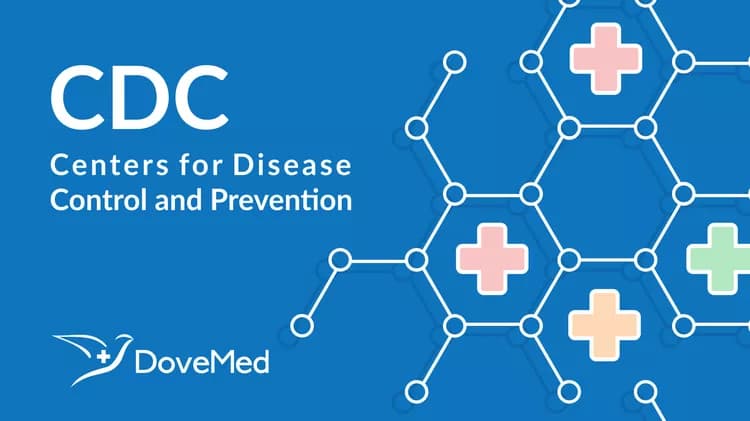
1996 HIV/AIDS Trends Provide Evidence of Success in HIV Prevention and Treatment
1996 HIV/AIDS Trends Provide Evidence of Success in HIV Prevention and Treatment
AIDS Deaths Decline for First Time
For the first time in the epidemic, there has been a marked decrease in deaths among people with AIDS. The decline in deaths is likely due to both the slowing of the epidemic overall and to improved treatments over the past several years, which have lengthened the lifespan of people with AIDS. While it is too soon to determine the impact protease inhibitors will have on these trends, these drugs promise to further lengthen the lifespan of individuals living with HIV. Additionally, the estimated number of people diagnosed with AIDS each year (AIDS incidence) continued to slow, with an increase of only 2% in 1995, reflecting in part the ongoing success of prevention efforts.
As treatment advances continue to improve survival, we will face a number of key challenges:
First, if the number of new HIV infections each year (HIV incidence) remains stable or increases, and deaths continue to decrease, there will be an increasing number of people living with HIV and AIDS. Additional resources will likely be needed for services, treatment, and care.
Second, to continue to provide the necessary data to plan, direct, and evaluate HIV prevention efforts, HIV/AIDS surveillance systems must adapt to changes in medical practices which increase survival following diagnosis of HIV or AIDS. If progression to AIDS is successfully delayed for an increasing number of individuals, AIDS case reports may no longer provide a reliable indication of trends in the epidemic and will underrepresent the need for treatment services. Surveillance systems will therefore need to improve methods to monitor the number of individuals with HIV infection.
And finally, as we continue to work to develop better treatment options, we must not lose sight of the fact that preventing HIV infection reduces the number of people who need to undergo complex, costly treatment regimens. Prevention remains our best and most cost-effective approach for bringing the HIV/AIDS epidemic under control and saving lives.
The 1996 Data: Trends in Case Reports, Estimated AIDS Incidence and Deaths
AIDS Cases Reported through December 1996
581,429 people with AIDS have been reported to date.
Of these, 488,300 (84%) were men, 85,500 (15%) were women, and 7,629 (1%) were children.
In 1996, blacks accounted for a larger proportion of AIDS cases (41%) than whites for the first time.
The proportion of female AIDS cases continued to increase. In 1996, women accounted for 20% of newly reported AIDS cases.
Trends in AIDS Incidence through 1995
Between 1994 and 1995, the estimated number of people diagnosed with AIDS (AIDS incidence) increased 2%, from 61,200 to 62,200. These estimates reflect a slowing in the growth of the epidemic, with an average of 15,200 people diagnosed each quarter between January 1994 and June 1996. Hopefully, with a combined strategy to prevent new infections and to provide early diagnosis and treatment for people who are infected, AIDS incidence will soon begin to decline.
AIDS incidence rates per 100,000 people in the population were 7 times higher among blacks (99) than among whites (15), and three times higher among Hispanics (50) than among whites.
AIDS incidence rates were much lower among women (10) than among men (48)
AIDS incidence remained relatively constant among men who have sex with men (decline of 2%) and IDUs (increase of 2%), but continued to increase substantially among people infected heterosexually (17% increase).
In 1995, the CDC AIDS surveillance system documented approximately 50,000 AIDS deaths. 1995 marked the smallest increase to date in AIDS deaths. During the first 2 quarters of 1996, the estimated number of AIDS deaths (22,000) was 12% less than the estimated number of AIDS deaths during the first two quarters of 1995 (24,900), marking the first decline in AIDS deaths since the beginning of the epidemic. Not surprisingly, trends in AIDS deaths closely parallel trends documented recently in AIDS incidence. AIDS deaths have not declined among women or among heterosexuals.
AIDS deaths declined in all four regions of the country (Northeast 15%, South 8%, Midwest 11%, West 16%).
Deaths declined among men by 15% but increased among women by 3%.
Deaths declined among MSM by 18% and 6% among IDUs, but increased 3% among heterosexuals.
Deaths declined among all racial/ethnic groups, but declines were greater among whites (21%) than among blacks (2%) and Hispanics (10%).
HIV infection remains the leading cause of death among 25Â44 year olds, accounting for 19% of deaths in this age group.
The number of people living with AIDS continues to increase. As of mid-1996, an estimated 223,000 people were living with AIDS.
AIDS prevalence has increased 10% since mid-1995.
The largest number of people living with AIDS by risk category are MSM (44%), followed by IDU (26%), and heterosexuals (12%).
The greatest proportionate increase in AIDS prevalence from mid-1995 to mid-1996 occurred among those infected heterosexually (19%), while the greatest increase in the number of people living with AIDS occurred among MSM (5000).
###
U.S. DEPARTMENT OF HEALTH AND HUMAN SERVICES
Related Articles
Test Your Knowledge
Asked by users
Related Centers
Related Specialties
Related Physicians
Related Procedures
Related Resources
Join DoveHubs
and connect with fellow professionals

0 Comments
Please log in to post a comment.